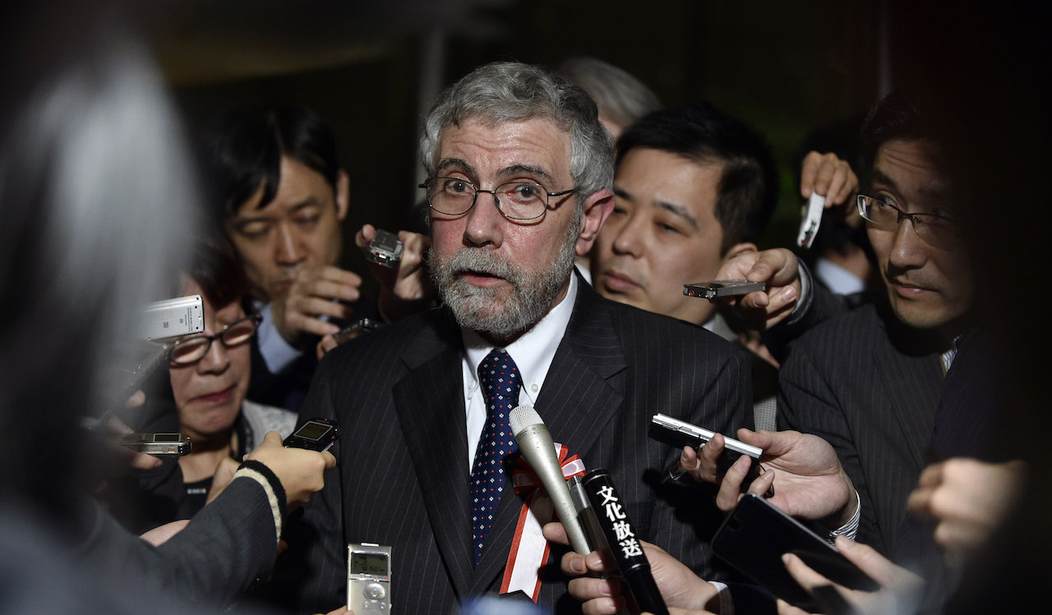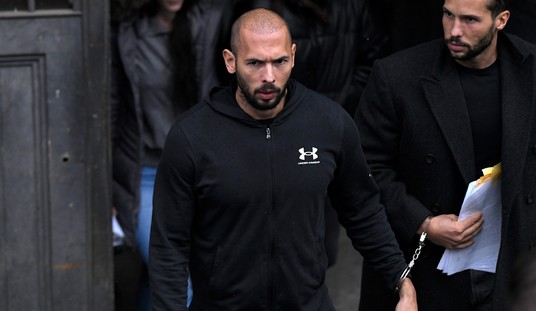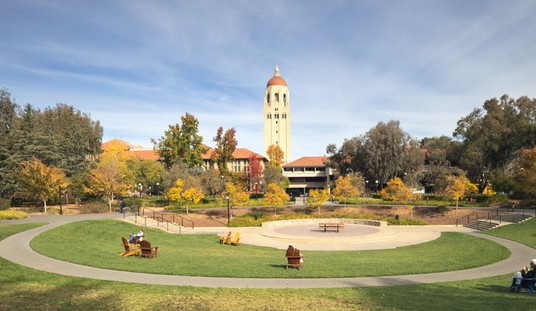Paul Krugman is not a dumb man and that means we can’t attribute his careful efforts to gloss over inconvenient fact to ignorance. If Krugman is trying to hide the ball in an argument, it’s not because he’s dumb it’s because he’s a dishonest partisan.
Case in point, yesterday Krugman wrote a column for the NY Times titled “Crime: Red Delusions About Purple Reality.” The reasons for this columns’ existence aren’t hard to discern. Numerous polls have showed that crime is one of the leading concerns in the country and it’s an issue on which Democrats are still struggling when they mention it at all. So it would be great for Democrats if they could somehow neutralize that issue in next month’s elections. Indeed, the fact that Krugman, who is a Nobel Prize winning economist, is writing about crime two weeks before the election should tell you something. Here’s Krugman’s take.
Americans aren’t wrong to be concerned about crime. Nationwide, violent crime rose substantially in 2020; we don’t have complete data yet, but murders appear to have risen further in 2021, although they seem to be declining again.
Nobody knows for sure what caused the surge — just as nobody knows for sure what caused the epic decline in crime from 1990 to the mid-2010s, about which more shortly. But given the timing, the social and psychological effects of the pandemic are the most likely culprit, with a possible secondary role for the damage to police-community relations caused by the murder of George Floyd.
First off, the claim that murder rates are declining may be true but if you follow the link he provides what the story actually says is that murders and shootings may be declining slightly, but are still way above 2019 levels.
Murders in major cities have fallen by 4 percent so far in 2022, compared with the same period in 2021. Shootings nationwide have fallen 2 percent. The decreases are not enough to undo the large increases in 2020 and 2021; the murder rate is still 30 percent above its 2019 level. But the spike appears to have peaked last year.
Krugman could have just said, murder rates may have peaked but are still 30% above 3 years ago. But, again, his goal isn’t to inform it’s to play politics. Also, his claim that “nobody knows” what caused the surge in violent crime probably shouldn’t be followed by his explanation of what factors caused it and in what order of importance. If nobody knows, how does Krugman know?
The one factor he does point to, the timing, actually strongly supports anti-police sentiment as the driving factor since the real spike in crime started not in March or April with the pandemic but at the end of May with George Floyd’s death. Krugman probably knows this but doesn’t say it because that would be contrary to his goal.
Finally we come to this awkward paragraph:
While the crime surge was real, however, the perception that it was all about big cities run by Democrats is false. This was a purple crime wave, with murder rates rising at roughly the same rate in Trump-voting red states and Biden-voting blue states. Homicides rose sharply in both urban and rural areas. And if we look at levels rather than rates of change, both homicides and violent crime as a whole are generally higher in red states.
It may not appear so, but I think this paragraph was very carefully crafted. The crime surge was real but “the perception that it was all about big cities run by Democrats is false.” And that’s true of course. It wasn’t all about big blue cities but it was largely about big blue cities. His first link about the purple crime wave goes to an argument put forward by Democratic group Third Way back in March. They titled it “The Red State Murder Problem” and it was carefully designed to shift the framing of the crime problem in a way more favorable to Democrats. Here’s a bit of it:
If you’re tuned in to the media, you’d think murder is rocketing skyward in New York, California, Illinois. But those states don’t even crack the top ten.
In fact, the top per capita murder rate states in 2020 were mostly those far from massive urban centers and Democratic mayors and governors. Eight of the top ten worst murder rate states voted for Trump in 2020. None of those eight has supported a Democrat for president since 1996.
The chart below shows the top 10 murder rate states in 2020. Mississippi had the highest homicide rate at 20.50 murders per 100,000 residents, followed by Louisiana at 15.79, Kentucky at 14.32, Alabama at 14.2, and Missouri at 14. The national average was 6.5 per 100,000 residents, but the top five states had rates more than twice that high.
All of that is true but also very intentionally misleading. By focusing on states and which candidate they voted for, Third Way manages to obscure where most of the increased violence is actually happening. Marc Thiessen wrote about this last week:
In most of these red states, the high murder rates are driven by the lethal violence in their blue cities.
Take Missouri. Yes, it voted for Trump. But it is also home to two of the most dangerous U.S. cities — St. Louis and Kansas City — both of which are run by Democrats. Earlier this year, CBS News did an analysis of the “deadliest U.S. cities” using the latest FBI and other crime data. In 2019, it found, St. Louis had the highest murder rate in the nation, with 64.54 murders per 100,000 residents. Kansas City, meanwhile, had the eighth-highest murder rate, with 29.88 murders per 100,000. According to the FBI, the state had about 520 murders in major metropolitan areas that year, 20 in cities outside metropolitan areas, and 28 in nonmetropolitan counties. So, the vast majority of Missouri’s homicides took place in its Democrat-run cities.
The same is true for Louisiana, which has two of the most lethal Democratic-run cities in the country: Baton Rouge, which in 2019 had the sixth-highest murder rate in the nation with 31.72 murders per 100,000 residents, and New Orleans, which had the seventh-highest rate with 30.67 murders per 100,000. Without those cities, the state’s murder rate would significantly drop.
That’s not all. Tennessee’s homicide rate was driven up by Democratic-run Memphis, which ranked ninth in the country with 29.21 homicides per 100,000 residents. Also powering the state’s murder rate: then-Democratic-led Chattanooga (No. 29) with 18.15 murders per 100,000 in 2019 (note: the city elected an independent in 2021); Democratic-run Nashville (No. 59) with 12.08 per 100,000; and Democratic-run Knoxville (No. 62) with 11.66 per 100,000.
The whole point of looking at this issue by state rather than by city or county is an effort to obscure what’s really happening and create a Democratic friendly talking point in the process. But if you break down the violent crime rate by city, you find something different.
Third Way does not provide city-by-city data for 2020 in its report, perhaps because this would undermine its red state murder narrative. But the Manhattan Institute’s Rafael Mangual gathered data on the 2020 murder rates in the 50 largest U.S. cities — 34 of which had Democratic mayors, while 14 were led by Republicans (two were led by independents). “The homicide rate in the blue cities was 15.8 per 100,000, compared to 9.4 per 100,000 in the red cities,” he found.
That second link Krugman provides goes to a Wall Street Journal story which notes homicide rose 25% in rural areas in 2020 while it rose 30% in metro areas. So it’s true that the increase in shootings and murders wasn’t limited to cities but that’s where it tends to be the worst. If there is a murder problem in the US it’s a blue city murder problem. Again, Paul Krugman probably knows all of this but putting forward facts which would undercut his thesis doesn’t interest him.







Join the conversation as a VIP Member